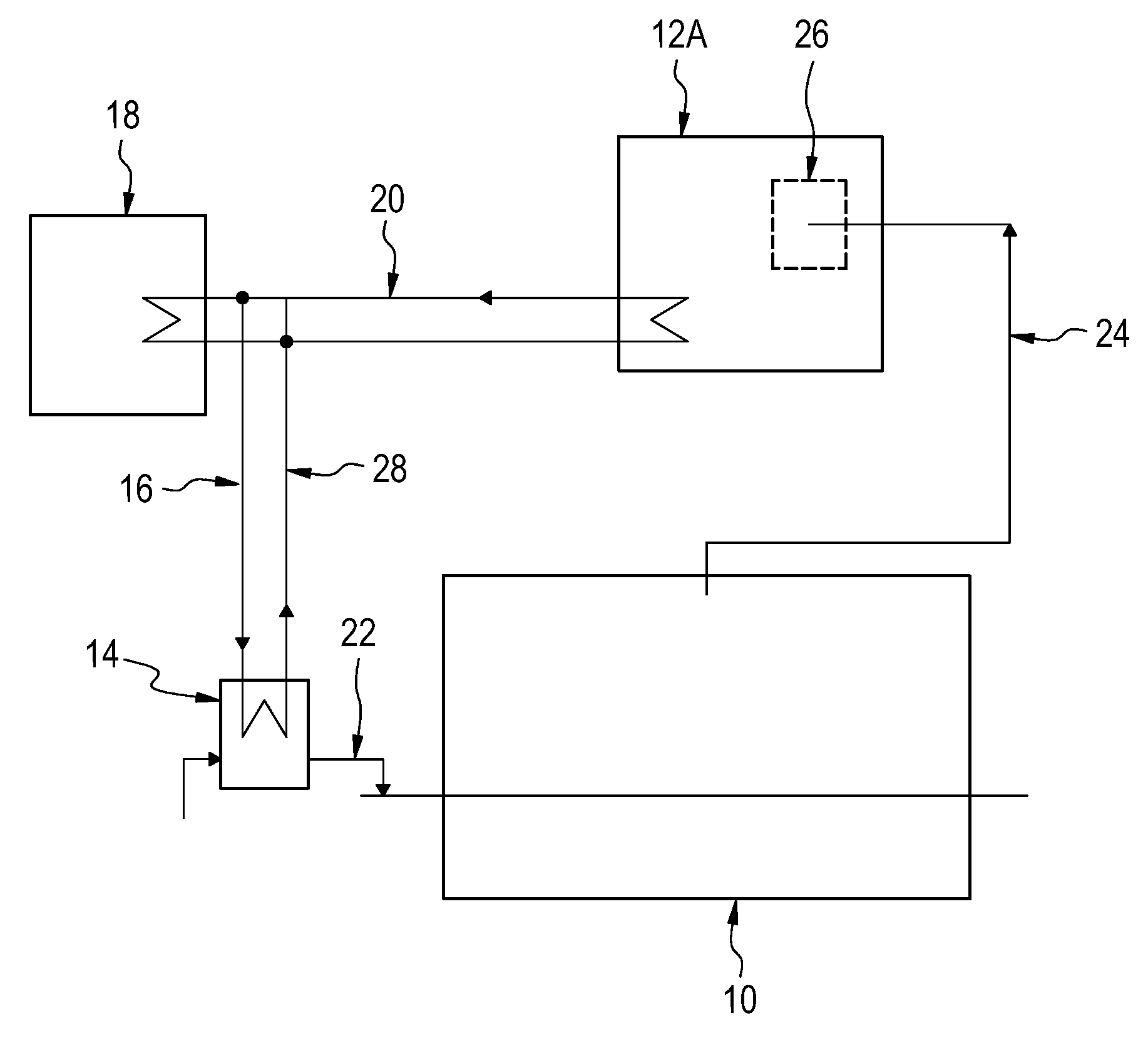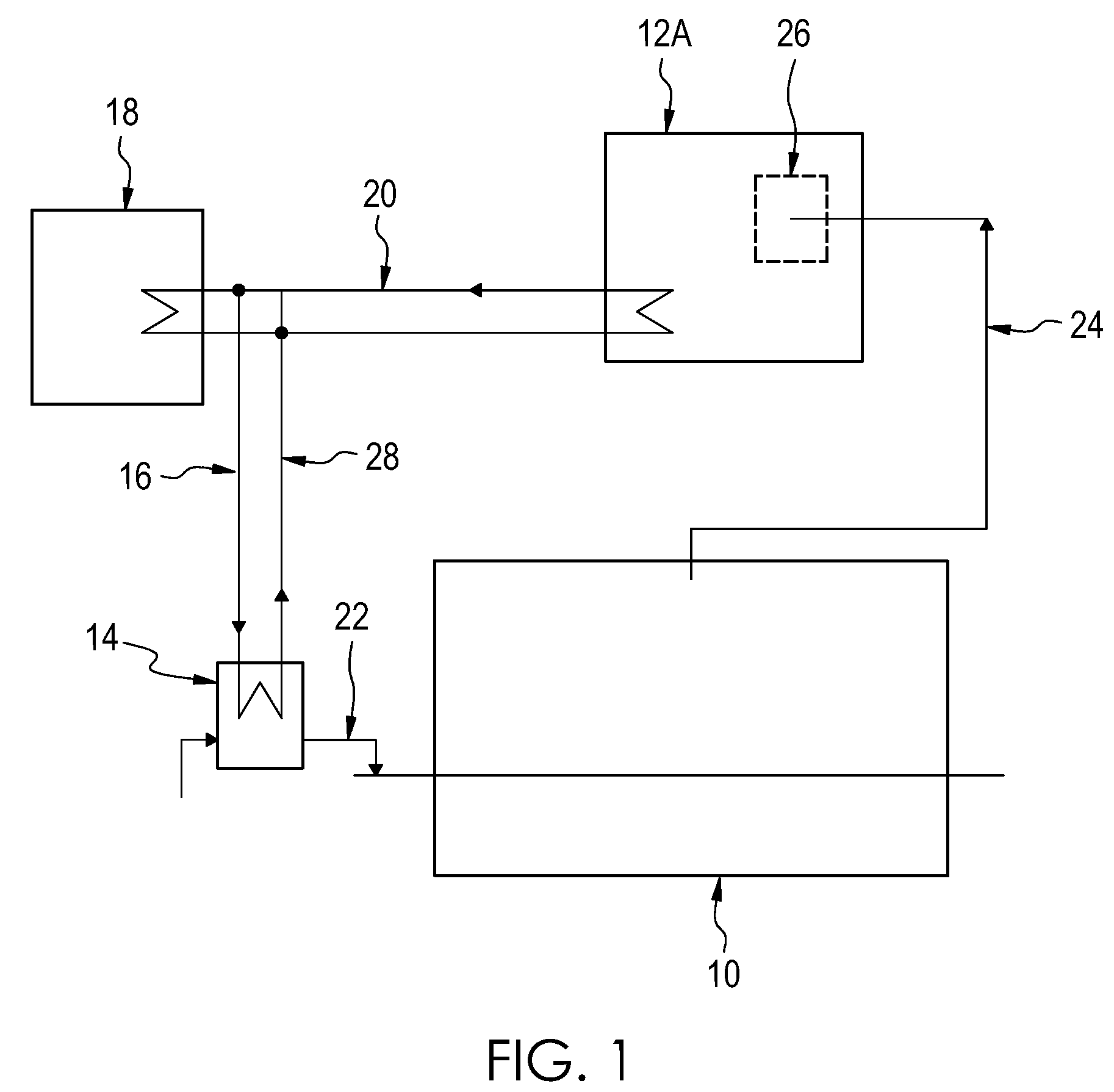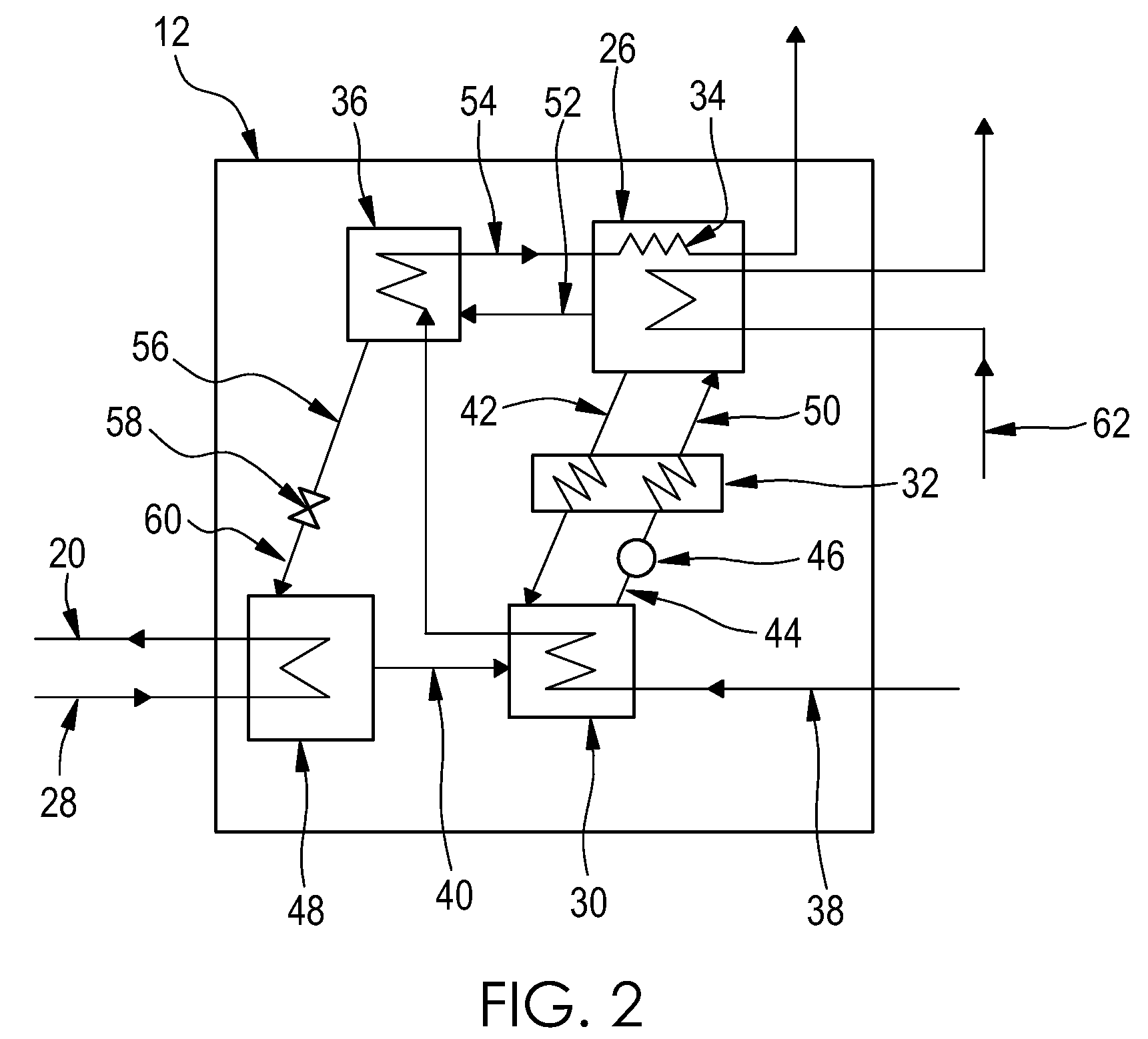Integrated cooling, heating, and power systems
a technology of integrated cooling and power systems, applied in the field of integrated cooling, heat and power systems, can solve the problems of low overall thermal/electric efficiency of existing micro-cchp systems, large and constant electric power, and large so as to reduce the footprint and size of cchp systems and increase the system performance. , the effect of increasing the system performan
- Summary
- Abstract
- Description
- Claims
- Application Information
AI Technical Summary
Benefits of technology
Problems solved by technology
Method used
Image
Examples
first embodiment
[0023]As demonstrated in certain embodiments of the present invention, a single-effect or multiple-effect absorption chiller is a better candidate to provide inlet air cooling than existing technologies, especially when the requirement for hot water diminishes in summer months. Also, during the summer, excess heat can be effectively utilized as an energy source for the single-effect or multiple-effect absorption chiller. Therefore, as shown in FIG. 1, this invention integrates an absorption chiller system with the micro-gas turbine to provide turbine inlet air-cooling, boost fuel-electricity efficiency, and power output in summer.
[0024]A single-effect or multiple-effect absorption chiller employed as part of the system of the first embodiment of this invention provides space cooling as well as cooling for the turbine inlet air. Cooling of the turbine inlet air in this manner allows the air to be cooled down to at least the ISO condition (59° F. and 60% relative humidity) during the ...
second embodiment
[0027]this invention depicted in FIG. 2 eliminates the need for a stand-alone HRU and a cooling tower, which are necessary in known systems, by adding a heat exchanger to the generator of the single-effect absorption chiller and by utilizing a feed of water from a source as a cooling system in the absorber and in the condenser of the absorption chiller.
[0028]In known single-effect absorption chillers, the generator serves as a liquid-vapor separator and usually occupies a relatively large volume. However, in the second embodiment of the present invention, a heat exchanger component of the generator allows water to pass through the generator in a separate path and be heated by turbine exhaust gas, as shown in FIG. 2. This design can remove the current HRU used in known systems and take advantage of the generator's volume for heating water. This integration will significantly reduce the space, cost, and system irreversibility.
[0029]Also, by using the second embodiment of the present i...
third embodiment
[0030]In known multiple-effect absorption chillers, the terminal generator serves as a liquid-vapor separator and usually occupies a relatively large volume. However, in the present invention, a heat exchanger component of the terminal generator allows water to pass through the terminal generator in a separate path and be heated by turbine exhaust gas, as shown in FIG. 3. This design can remove the current HRU used in known systems and take advantage of the terminal generator's volume for heating water. This integration will significantly reduce the space, cost, and system irreversibility.
[0031]Also, by using the third embodiment of the present invention, as demonstrated in FIG. 3, the cooling tower employed with most multiple-effect absorption chillers in known systems can be removed by using a feed of water from a source through the absorber and then by redirecting the feed of water from the absorber to the initial condenser, so energy released from the initial condenser can be ef...
PUM
 Login to View More
Login to View More Abstract
Description
Claims
Application Information
 Login to View More
Login to View More - R&D
- Intellectual Property
- Life Sciences
- Materials
- Tech Scout
- Unparalleled Data Quality
- Higher Quality Content
- 60% Fewer Hallucinations
Browse by: Latest US Patents, China's latest patents, Technical Efficacy Thesaurus, Application Domain, Technology Topic, Popular Technical Reports.
© 2025 PatSnap. All rights reserved.Legal|Privacy policy|Modern Slavery Act Transparency Statement|Sitemap|About US| Contact US: help@patsnap.com



